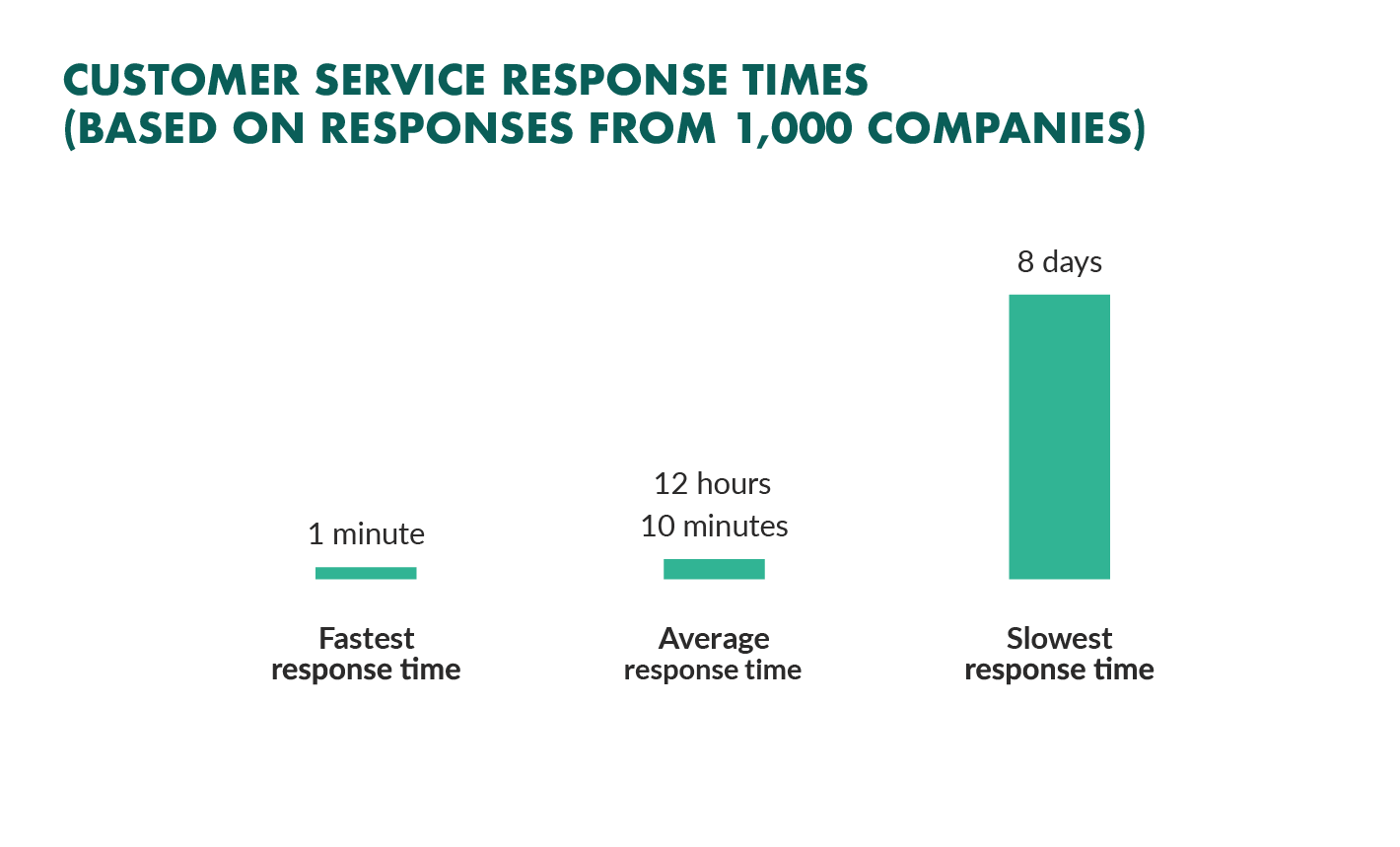Reduce Customer Service Response Times

Yet, in our annual customer service study,we found that 62% of companies do not respond to customer emails.
It’s clear that you have an opportunity to stand out against the competition by simply responding to your customers.
For companies that do respond, the average response time is 12 hours – with the slowest response taking longer than 8 days!
Recently asked 3,200 consumers how quickly they expect companies to respond to their email.
The result? Nearly half of all customers (46%) expect companies to respond faster than 4 hours.
While 12% expect a response within 15 minutes or less.
Adding on, 90% of customers view an instant response as either crucial or very important when they need customer service assistance. Of these, 60% consider instant to mean within 10 minutes or faster.
There's clearly a mis-match here.
Do you know how long it takes for you to respond to your customers?
To answer that question, you need to calculate your first response time (FRT).
What is average first response time (FRT)?
Average first response time is one of the most important customer service reports used to understand how you are performing. It looks at not just the one-off response for a single customer, but the average response time for your entire department.
Reducing response times and responding to your customers with helpful and relevant information is the key to customer success.
Therefore, if you want to improve the experience for your customers, then you need to make reducing your average FRT a priority for your business.
So, how do I calculate average FRT?
To understand how to calculate your average FRT, there are two key pieces of data you need to collect from your customer service team:
- The total time it took to respond to emails during a selected time period.
- The total number of responses sent in that selected time period.
Make sure the time period for both metrics matches. You may want to look at this over the course of a day, a week, or even a month to get a clear picture.
Then, simply divide the top figure (total time to send responses) by the bottom figure (total number of responses). This will give you a single number of hours, which is your average FRT.
Let’s imagine you send 3 customer service emails per day.
The first email takes 2 hours, the second takes 4 hours, and the third takes 6 hours. Collectively, it takes you 12 hours to respond to all 3 emails. Now, divide 12 hours by the 3 emails you sent and you end up with an average response time of 4 hours.
If you calculate that your average response time is 4 hours, then – job well done!
However, if it takes your team longer than the average to respond, then it might be time to examine how to amp up team work and find new ways to improve your processes, so you can reduce response times and keep your customers happy.